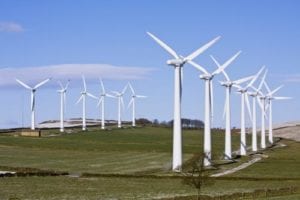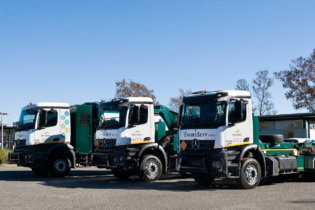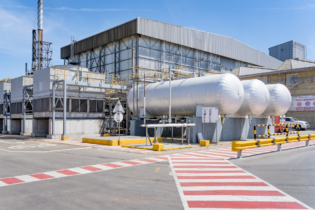As South Africa’s wafer-thin reserve margin finally crumbled in the past week to usher in load shedding, irate consumers were again left in the dark in more than one way.
Given this bleak situation, the imminent commissioning of more than 600 MW of wind power could not come at a better time. These wind farms were procured under the government’s Renewable Energy Independent Power Producer Procurement Programme (REIPPPP), all built with private money, all built on time (in less than 18 months) and will provide electricity at about sixty five times less than the cost of not having electricity. The energy produced will be able to supply tens of thousands of South African households. Dipolelo Elford, Chair of the South African Wind Energy Association, explains: “Data from the National Energy Regulator shows that the last time when we had load shedding, the cost of the unmet electricity demand was ZAR 75/kWh. This represents a huge loss to the economy: Factories not being able to produce at full capacity and fewer workers being fully employed than could otherwise be the case. Economic growth is suppressed to the detriment of us all. Wind power coming into the grid already with more due very soon will ease the electricity crunch. Moreover, we as the wind industry are able to build much more than we’re presently doing, rapidly. Dozens of prospective wind farms have all permits and approvals in place and could go into construction within six months if government gives the go-ahead today. All these wind farms create jobs and have very significant positive impacts on the economy. The first utility scale wind farms developed have begun exporting electricity to the grid, making wind energy’s contribution to the nation’s electricity needs a firm reality. Three of the wind farms (the Van Stadens wind farm outside Port Elizabeth, the Klipheuwel Dassiefontien wind farm near Caledon and the Hopefield wind farm on the West Coast) are now online providing 120MWs of capacity.A fourth wind farm, Jeffery’s Bay (138MW) which has not yet reached full commercial operation came to Eskom’s rescue last week when supply was critical: “Eskom lifted a temporary curtailment on the Jeffrey’s Bay wind farm in order to allow increased supply to the grid. We were happy to oblige and maximised production to help Eskom through its crisis,” Explains Mark Pickering, General Manager of the wind farm, which will supply the equivalent of over 100,000 homes once fully exporting to the grid. The other Round 1 wind energy projects are expected to reach commercial operation in the next few months. The wind farms already being developed in Round 2 and 3 will add another 1421MW to the grid.
The South Africa Wind Energy Association (SAWEA) CEO Johan van den Berg comments: “Wind energy is a proven, reliable technology globally and South Africa’s first large commercial scale wind farms are now up and running, providing power to the grid. Our overloaded electricity system needs more electricity production urgently and wind turbines can provide that – fast and relatively cheaply. Due to the competitive nature of the REIPPPP bidding rounds, the price of wind energy has decreased by 42%: in the last REIPPPP round (3) it averaged 74 cents per kiloWatt hour (kWh) – 30% cheaper than the predicted cost of new coal at Medupi. Round 3 was hugely oversubscribed, demonstrating that there are more private investors and developers just waiting to build more wind farms.“ Van den Berg continues: “Our message is simple: wind energy is already here and there is plenty more in development and ready and waiting to be given the go-ahead, with comparatively quick development times. The government has already initiated a world-class procurement programme which is working well and stimulating investment, but South Africa needs more power now and the wind industry is ready and willing to provide that.”







